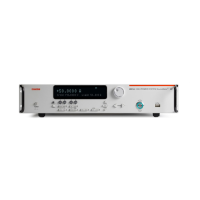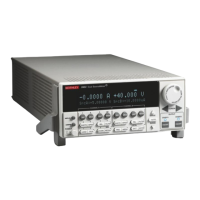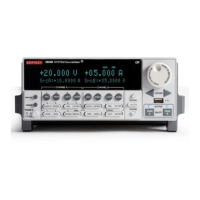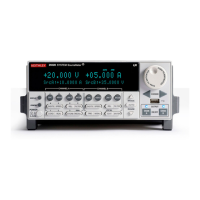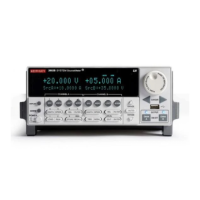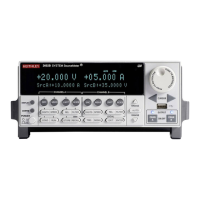Model 2657A High Power System SourceMeter® Instrument Reference Manual Section 9: Frequently asked questions (FAQs)
2657A-901-01 Rev. B/December 2012 9-5
To save the reading buffer data:
1. From the front panel, press the STORE key, and then select SAVE.
2. Select INTERNAL to save to internal nonvolatile memory.
3. Select one of the following:
• SMUA_BUFFER1
• SMUA_BUFFER2
4. The front panel displays Saving... This may take awhile.
5. Press the EXIT (LOCAL) key to return to the main menu.
For additional information, see Saving reading buffers
(on page 3-8).
When should I change the output-off state?
Carefully consider and configure the appropriate output-off state, source, and compliance limits
before connecting the Model 2657A to a device that can deliver energy (for example, other voltage
sources, batteries, capacitors, or solar cells). Configure recommended instrument settings before
making connections to the device. Failure to consider the output-off state, source, and compliance
limits may result in damage to the instrument or to the device under test (DUT).
The Model 2657A instrument provides multiple output-off states. The multiple states are required
because different types of connected devices (or loads) require different behaviors from the Model
2657A when its output is turned off.
For example, a passive device such as a diode is not affected by a 0 V source connected across its
terminals when the output is turned off. However, connecting a 0 V source to the terminals of a
battery causes the battery to discharge. Therefore, careful selection of the proper output-off state is
important to prevent damage to devices and instruments. This is especially true when the device can
deliver energy to the Model 2657A, such as a battery or capacitor. In these situations, you should use
an output-off state that isolates the instrument from the device by either setting
smuX.source.offfunc = smuX.OUTPUT_DCAMPS or smuX.source.offfunc =
smuX.OUTPUT_DCVOLTS, as applicable.
How do I make contact check measurements?
For information about making contact check measurements, see Contact check measurements (on
page 2-37) and Contact check
(on page 4-21).
CAUTION
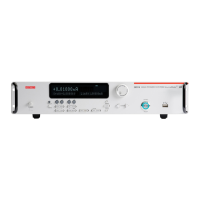
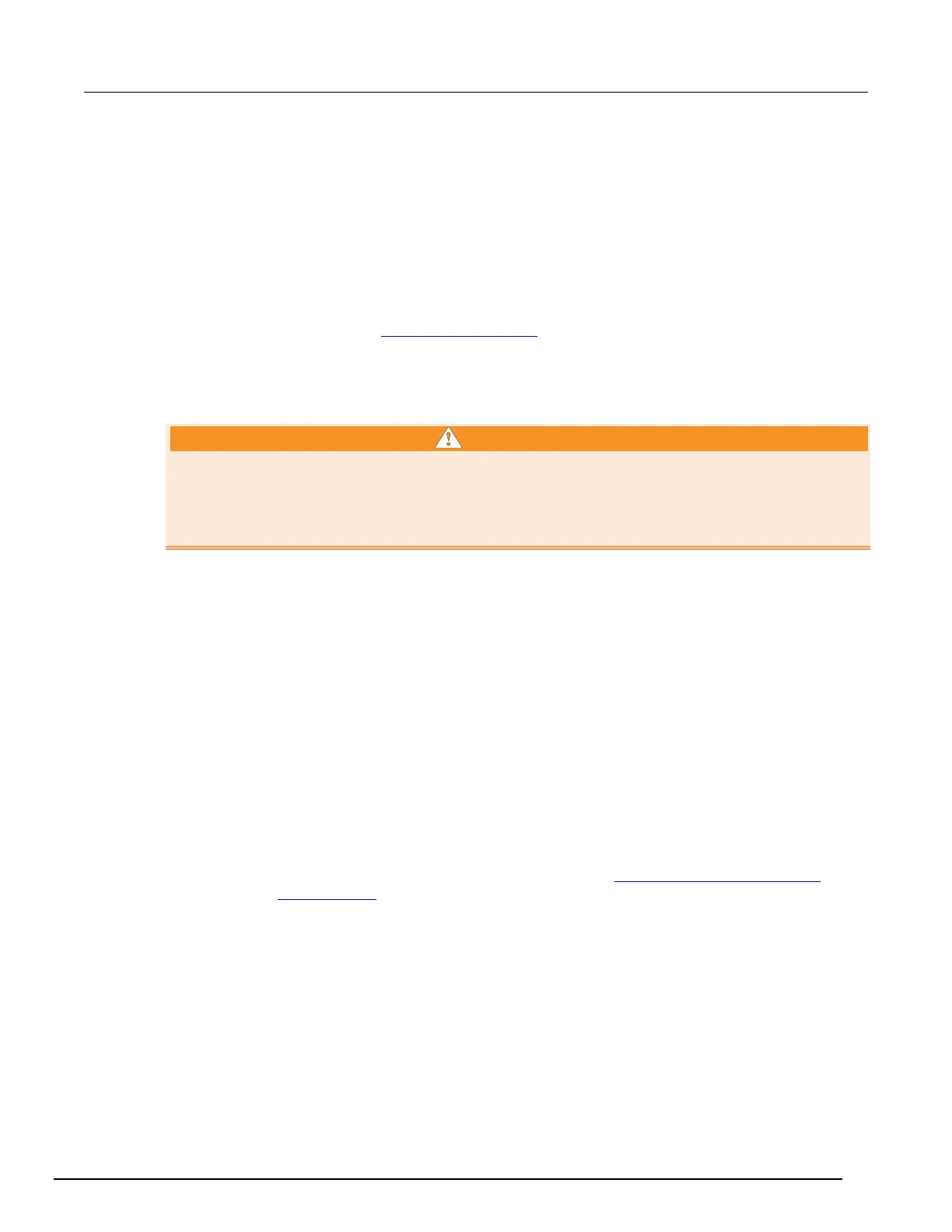